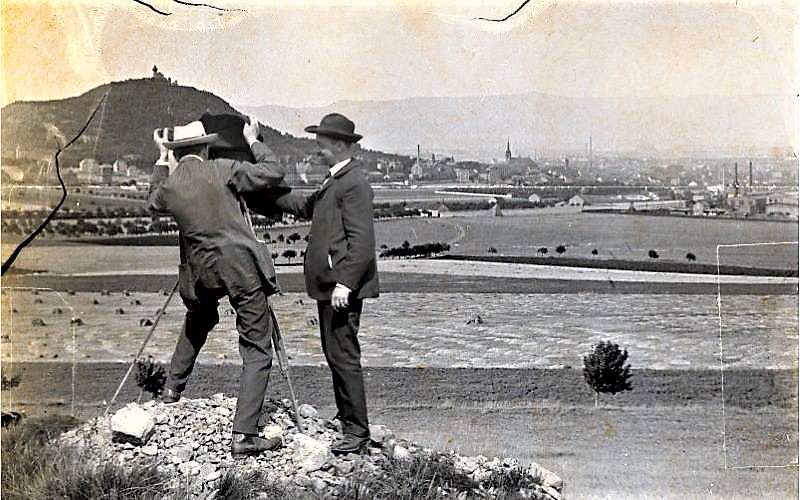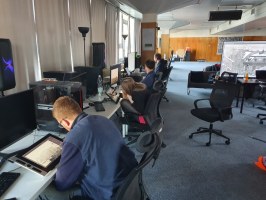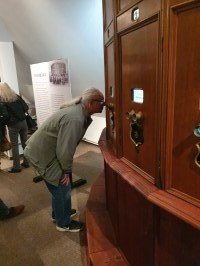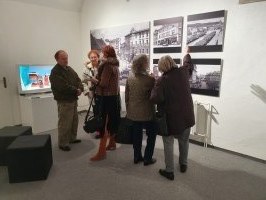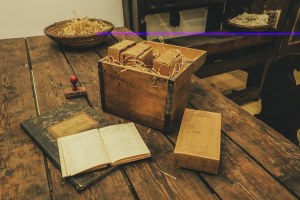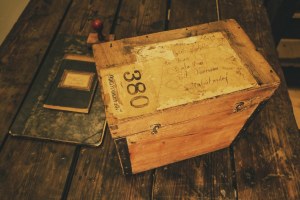PANORAMA OF OLD MOSTECKO
› Detail › PANORAMA OF OLD MOSTECKO
Panorama of the old Most region
registration number CZ.02.3.68/0.0/0.0/18_067/0012378
The project is realized by the Regional Museum and Gallery in Most, a contributory organization as the recipient of the grant.
Project implementation start date: January 1, 2020
Project implementation end date: December 31, 2022
The subject of the project is the creation of a digital educational resource (DER), which will consist of three educational modules:
- 1. Stereoscopic images – “The World and the Region around 1900”
- 2. Historical photographs of Mostecko
- 3. Virtual Museum of Mostecko.
This is an interactive DER that actively engages students from primary and secondary schools in the learning process.
The aim of the project is to create a new interactive form of presentation of exhibits/collections of the Regional Museum and Gallery in Most, which will be accessible and usable online or in person with the help of digital technologies for the educational needs of students in primary and secondary schools. This form of teaching is key to improving the quality of education and reducing student failure rates in subjects such as history, civics, geography, and natural sciences. The project focuses on integrating digital technologies into student education with an emphasis on interactive engagement. Students will experience an increase in digital literacy and computational thinking. The project also plans to involve students with special educational needs, for whom the DER will also be prepared.
The Panorama of Old Mostecko project is co-financed by the European Union.
Facebook profile of Panorama of Old Mostecko
Publishing activity
Panorama of Old Mostecko, author Michal B. Soukup, magazine Pod Hněvínem 4/2020
In January 2020, the project of the Regional Museum and Gallery in Most (hereinafter referred to as OMGM) titled “Panorama of Old Mostecko” was launched, which is co-financed by the European Union, specifically from the Operational Program Research, Development, and Education. The funds for its implementation were obtained through the Ministry of Education, Youth and Sports, where the project is registered under the registration number CZ.02.3.68/0.0/0.0/18_067/0012378. Only a few museums from across the country succeeded in the program, which can be considered a significant achievement.
The main purpose of this ambitious plan is to create a Digital Educational Resource (DER) that will enable a new way of accessing exhibits from the OMGM collection – primarily photographs and negatives – through virtual reality (“3D glasses”). The target group of the project is primary and secondary school students, with three schools in Most directly collaborating on its implementation. These include the Primary School and Kindergarten in Horní Jiřetín, AMA SCHOOL – Primary School and Kindergarten Montessori o.p.s. in Most, and the Primary School and Kindergarten in Litvínov-Janov. The OMGM collection contains thousands of photographic images in the form of positives and negatives. Most of them remained hidden in the depository for decades and have not yet been adequately presented to the public, although the oldest examples were created at the turn of the 50s and 60s of the 19th century. Over the long years of its existence, some have unfortunately cracked, faded, or lost sharpness, so it is essential to preserve the image information in the highest quality possible through careful scanning. The originals must then be stored in a climate-controlled environment without light access to be preserved for future generations.
The scanned images will become the foundational building blocks not only for the planned educational modules and separate websites but will also serve in the future for researchers and the wider public as research and educational material. In addition, a group of three-dimensional exhibits will be scanned, which will fill the “virtual museum” and allow school students the closest contact with objects they would normally not be able to touch.
Over the next two years, three educational modules will gradually be created. First, OMGM will present Stereoscopic Images – The World around 1900. These are pairs of images that, when viewed with both eyes through magnifying lenses, create the impression of three-dimensional vision. Hundreds of these glass stereoscopic positives were saved after the demise of the famous Litvínov Panorama and preserved in the museum collection along with its ruins. Thanks to modern technology, they will come to life again in the form of trips across Europe and other parts of the world, as perceived by local residents over a hundred years ago.
The second module focuses on making Historical Photographs of Mostecko accessible, mainly from the period 1890–1945. The old museum collection received items from the municipal authority, from private individuals, or through purchases. Some photographs were also taken by the museum itself. In the 1930s, the active photographer Otto Kittel became the curator of museum documentation. He included older glass negatives in the collection, for which he created a card catalog. Kittel roamed Mostecko for years, documenting the landscape and settlements – thus capturing their appearance before the massive increase in coal mining. The growth of the museum's photographic collection was also significantly influenced by local photographic studios – among them, the most notable were the firms C. Pietzner (who operated in many other towns, e.g., in Litoměřice, Teplice) and Alfred Hoffmann. Alfred Hoffmann himself was a member of the museum society, so he provided many photographs to the museum for free, or the city purchased them for the museum. For example, a series documenting the requisition of Mostecko's bells during World War I. Most of them never returned to Most.
The collection also includes several larger sets. Among them stands out, for example, the documentation of the coal mining disaster in 1895, the construction of the Janov dam (1911-1914), the ceremony of consecrating new bells in Most (1924), or a group of shots of the ruins of houses after the bombing (1944). Throughout the series, distant views of the city of Most were also created – especially from the popular viewpoint on Hněvín.
The culmination of the work on the project will be the Virtual Museum of Mostecko, which will allow children to view selected historically valuable items from the OMGM collection, manipulate them, look inside them, or even disassemble them, all in virtual reality. Each item will be accompanied by a set of information that will fully present its story and historical significance. This way, children will be able to learn, for example, about the function of a miner's gas lamp.
In the future, 3D glasses will be used in OMGM not only by school youth but also by adults and seniors after the project's goals are achieved, who will certainly appreciate the “trip to old times” just as much.



